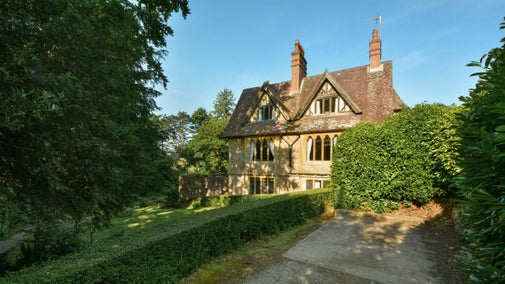
Become a member
Join today and help protect nature, beauty and history – for everyone, for ever. Enjoy access to more than 500 places with National Trust membership.
A wilderness of tranquility set against Brunel's famous suspension bridge
near Bristol, Bristol

| Asset | Opening time |
|---|---|
| Leigh Woods | Dawn - Dusk |
Dogs are welcome on leads. Please clean up after your dog; a dog bin is provided at the North Road entrance
Extensive network of surfaced and unsurfaced paths throughout the woodland, most of which are moderately level. The access paths to the River Avon Trail are steep in places and muddy in wet weather. Dogs on leads welcome.
National Nature Reserve and Site of Special Scientific Interest (SSSI), on the outskirts of Bristol.
From bug-hunting to puddle jumping, and even a wild adventure trail, there’s lots for families to see and do at this National Nature Reserve within a stone’s throw of Bristol.

Discover the rare and threatened wildlife and flora that thrives in this designated National Nature Reserve, including song thrushes and a whitebeam found nowhere else.

Explore the outdoors at this wildlife-rich woodland playground which boasts running, walking and mountain biking trails, and its own orienteering course.

A gentle mile-long stroll through some of the wonderful veteran trees at Leigh Woods.

A circular one-mile walk around Leigh Woods, taking in veteran trees, dramatic views from the edge of the Avon Gorge and Stokeleigh Camp hillfort.


On the Tyntesfield estate, this former hunting lodge has an octagonal summerhouse and farmland views.

On the edge of the Tyntesfield estate, this Gothic Revival style house makes a striking holiday escape.

This Victorian gate lodge has been elegantly restored and has a huge private garden.
Sorry, there are no upcoming events at this place
Explore the beautiful and diverse broadleaf woodland on the plateau above the famous Avon Gorge, boasting superb views across the city to downland beyond. Leigh Woods National Nature Reserve has been an intrinsic part of Bristolian life for centuries.
Designated pathways will lead you through oak, small leaf lime and ash forest. Springtime brings an abundance of bluebells and wood anemones, whilst the summer months offer relaxing, shady walks. The red and golden hues of autumn, combined with an interesting array of fungi, are particularly beautiful.
Former woodland pasture offers a mixture of open grassy glades, surrounded by broadleaf woodland and many veteran oak pollards, where established footpaths lead to wonderful views of the suspension bridge and the city beyond.
An easy surface pathway follows the base of the gorge, where the true scale of it becomes apparent. Look up to the soaring suspension bridge above and the beautiful broadleaf woodland, interspersed with areas of flower-rich limestone grassland around old stone quarries. Rockrose, Bristol Rock-cress and Black Knapweed are all native to this area.
From lovelorn giants to land disputes, celestine quarrying to stone hillforts – discover the fascinating history of Leigh Woods, now managed by the National Trust.

From looking after veteran trees, through cattle grazing programmes, to combatting ash dieback, learn how Leigh Woods is being cared for by the National Trust.

Search for live volunteering opportunities, or register your interest with Leigh Woods.


Join today and help protect nature, beauty and history – for everyone, for ever. Enjoy access to more than 500 places with National Trust membership.
By sharing your email address you’re agreeing to receive marketing emails from the National Trust and confirm you’re 18 years old or over. Please see our for more information on how we look after your personal data.